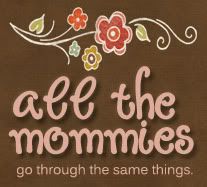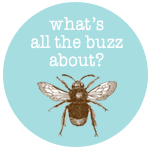
We can never be too careful when it comes to kids in the kitchen. It is definitely the place where children get hurt more often in a house. My mom got her whole arm burnt when she was only one year old. They were getting ready for a Christmas dinner and her mother was frying an egg before the dinner because her dad wasn't home yet and she was getting hungry. All my mom did was hit both hands on the oven door and since I guess the pan was a little wabbly the hot oil spilled all over her arm, ear, foot and stomach. Her left arm is still covered in scars. My grandmother put her arm immediately under running water and the doctor said that saved my mother's life.

I know of a little boy who picked up a bottle of olive oil and after it shattered on the ground he slipped and fell and got serious cuts all over his body.
Just the other day my two-year-old nephew was here playing with my son and we come downstairs to find out they had opened the dishwasher and had scissors and steak knives in their hands.
I'm pretty sure you've all had experiences like these or know people who have. We can never be too careful when it comes to little kids in the kitchen. The other day my son wanted to get his Buzz Lightyear from the kitchen counter so he went and grabbed his tiny little stool to climb on. He had never done that before or even thought of it, but since it was a toy that he really wanted he thought and acted fast.
Please keep all the knives up where they can't reach. Before you know it, they'll be tall enough to reach the places where we thought they couldn't reach before.
Whenever you're cooking, make sure they are away from the oven, and if cooking on the stove top do not use the front burners unless you really need to. And if so keep the pan handles to the back of the stove, never where the kids can reach and pull it down.
Always make sure you have the appropriate child locks for cabinets and drawers if you need them (we don't have any because we usually keep the dangerous stuff up where they can't reach).
If an accident does happen though, we have to be able to act fast. Here are some helpful tips of how to treat burns in children:

Burns in children vary in their severity — and are classified by degrees:
- First-degree burns affect just the outer layer of skin. Your little one’s skin will be red and swollen skin and she’ll be in some pain.
- Second-degree burns involve the first and second layers of skin. Your child’s skin will be bright-red, swollen, and blistery, and she’ll be in severe pain.
- Third-degree burns involve all layers of the skin and underlying tissue. Your child would have a wound that looks charred, black, white, leathery, or waxy. She may not be any pain because the nerves on the skin are damaged.
How to treat burns in children
First separate your child from the source of heat as fast as possible.- If any part of a child is on fire, wrap her in a blanket, coat, bedspread, or even your own body, and (if you can) roll her on the ground to extinguish the flames.
- If a chemical substance has burned your child’s skin, flush the area with cool water for at least five minutes before removing any clothes — this will prevent you from exposing any other parts of your child’s body to chemicals. Then continue flushing the area with water for up to 20 minutes. If the chemical is a powder, brush it off the skin before flushing the area with water.
- If your child has experienced an electrical burn, disconnect the power source. If you can’t do that, separate your child from the power source by using a nonmetallic object (such as a wooden spoon, a rope, or a large book). Never use your bare hands (you risk getting a shock, too).
Next, treat the injury — though treating a burn depends on how severe it is:
To treat minor (first-degree and small second-degree) burns in children
- Remove any clothes from the injured area. Remember that in the case of a chemical burn, you’ll want to flush the area with water for several minutes before removing any clothes.
- Run cool water over the wound for at least five minutes or until your tot seems to be in less pain. Or put a clean, cool wet cloth (or washcloth) on the burn for several minutes or until her pain subsides — you’ll probably need to continue re-wetting the cloth to keep it cool. Do NOT apply ice, butter, or powder to the injury since this could aggravate it. And do NOT break any blisters since this makes the wound more vulnerable to infection.
- Gently pat the skin dry and cover it loosely with a nonstick sterile bandage or gauze to protect the skin.
- Give your little one a pain reliever such as acetaminophen or ibuprofen (but don’t give ibuprofen to babies under six months).
- Call the doctor. Your pediatrician may recommend applying aloe or another topical ointment like Silvadene (for which you’ll need a prescription ) for treating a burn, but minor burns usually heal without much more treatment. Just watch for signs of infection — redness, fever, swelling, or oozing. Depending on the burn, the doctor may advise you to avoid exposing the area to sunlight for several months to prevent your child’s skin from becoming discolored.
To treat large second-degree and any size third-degree burns in children
- Remove hot or smoldering clothing only if the clothes don’t stick to the wound. Remember that in the case of a chemical burn, you’ll want to flush the injured area with water for several minutes before removing any of your child’s clothes.)
- Lay your little one flat, and, if possible, raise burned body parts above her chest level. Apply a cool washcloth (or any clean, lint-free cloth) for ten to 20 minutes. Note that you may need to re-wet the washcloth periodically to keep it cool. Don’t immerse large areas of her body in cold water since this could cause shock.
- Do NOT apply ice, butter, or powder to the area since this could aggravate the wound. And do NOT break any blisters since this makes the wound more vulnerable to infection.
- Gently pat the injured area dry and cover the burn with a sterile cloth or bandage (or a cool, lint-free sheet). Keep your child as warm and comfortable as possible to prevent shock.
- Call a doctor as soon as possible (for a severe burn, call 911).
When to call the doctor
When treating a burn, it’s important to call the doctor as soon as you’ve dealt with the injury. Call 911 as soon as possible if the following conditions apply:- You think your child has a serious or large second- or third-degree burn.
- The burn comes from a fire or is an electrical or chemical burn. (In the case of an internal chemical burn — your child has swallowed drain cleaner, for example — call Poison Control instead at 800-222-1222.)
- Your child is having trouble breathing or isn’t responding.
Do any of you have any other helpful tips when it comes to child safety? It doesn't necessarily need to be in the kitchen. Please share!





5 comments:
Thanks for the post, Aline. We can never be too carefull.
One thing that I always make sure to be careful with is when I am ironing clothes. I always try to iron when my son is sleeping. And if I REALLY need to do it when he is awake ( and I'll iron only the item I really need), I put a movie on in the living room for him and do the ironing in my bedroom. And if I am not ironing, the iron is ALWAYS out of my son's reach.
I have heard so many stories about children getting burnt with irons. Be careful with those, too.
nossa, eu achoq eu sou um super freak quando se vem a acidentes dentro de casa. inclusive ano passado eu fiz um paper soh falando disso pra minha aula de ingles. Eu acredito q acidentes podem muito ser evitados. E temos q evitar o maximo possivel, porque depois q eles acontecem, soh tem a lamentar neh?
Aqui em casa a gente (mais eu neh, porque o Brandon eh um pouco desligado as vezes..ele tambem acha q esta tudo sobre controle) tenta nao deixar facas na cutting board, perto da beira do counter. As nossas facas ficam no cantinho do counter no knife block. As panelas sempre com o cabo virado pro outro lado. Nos cabinets a gente nao tem nada dangerous ao alcance da Rachel.
Uma coisa q felizmente tem dado certo com a gente eh q rachel overall eh obediente e se eu digo q nao eh rpa ela mexer ali, ela nao mexe mais..por exemplo a dishwasher. Um dia qunado ainda era pequena, ela abriu e comecou a pegar as coisas de dentro. Eu disse q ela soh podiaa abrir se fosse comigo. E dai pra frente nunca mais abriu. Mas nunca eh demais ficar de olho neh?
Em volta da casa, a gente coloca lock no armario da laundry pra ela nao mexer nos produtos de limpeza, porque outro dia ela viu um q era purple e falou: "ju-juice!!!"..hehehehe
Uma coisa q eua doro aqui nos EUA eh q os fornos nao sao quentes do lado de fora! nossa, tanta crianca q se queima porque encosta no forno neh? aqui a gente nao precisa ja se preocupar tanto.
Portas sao outro pontoq eu sou uma freak. (eu achoq no dia q voces vieram aqui voce percebeu o tanto q eu sou uam freak com isso neh?). Crianca perto de porta e brincando com porta pra mim eh proibido. Eu nao deixo mesmo e eu boto de castigo. Porta soh pode mexer se o pai e a mae pede. :)
Banheiro eu sou muito cuidadosa. Tampa da privada sempre fechada ou com o assento de crianca, assim ano tem espaco pra ela cair de cabeca e afogar lah dentro.
E sim, eu sou TOTALMENTE a favor de prevenir e falar sobre acidentes dentro de casa. Porque a casa eh sim um dos lugares q mais acontecem acidentes com criancas.
Muito bom esse post sobre acidentes em casa, concordo que em casa eh o local que as criancas podem ter muitos acidentes, afinal estao sempre pela casa neh, e sempre acontece em um piscar de olhos...muito bom, parabens.
eu uso locks e aquele protetor de tomada, coloco panela nas bocas de traz do fogao, nao coloco nada onde Olivia pode pegar e deixo as portas fechadas, ela nao sabe abrir ainda. Mas a danada da uma de macaca e agora sobe nos sofas... danada mesmo viu?
I'm surprised no one mentioned baking soda toothpaste on minor burns as a treatment! That was one of the first Brazilian tricks I learned after I got married!
Post a Comment